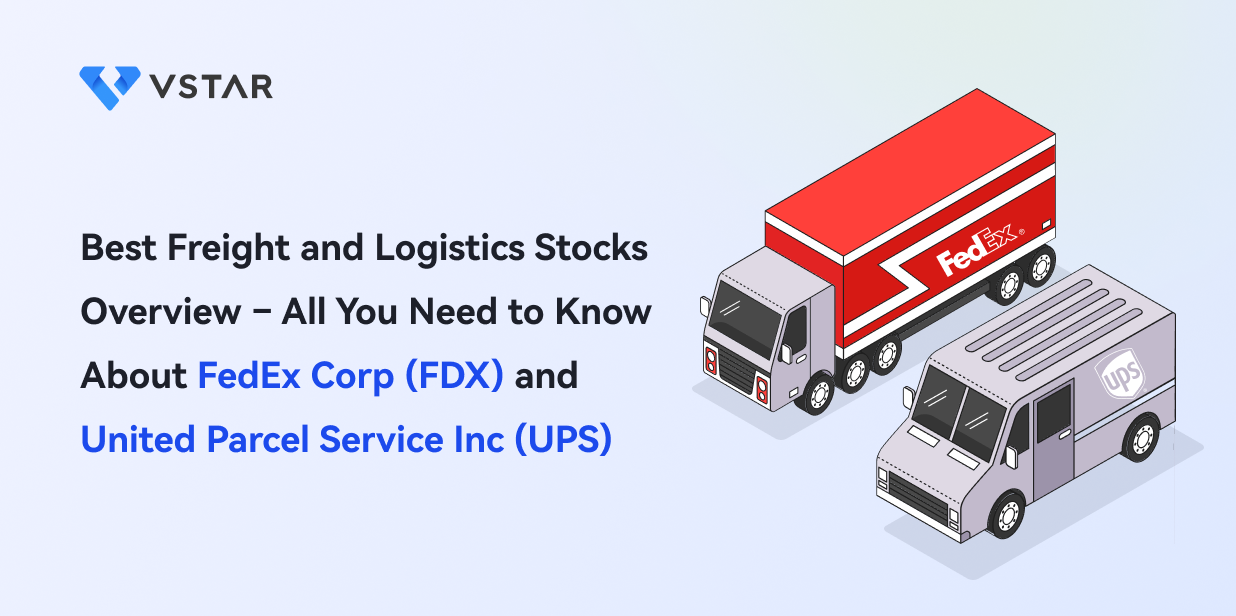The freight and logistics industry is a vital part of the global economy, as it facilitates the movement of goods and services across borders and regions. According to reports, the freight and logistics industry worldwide was worth about $10.68 trillion in 2022 and should hit around $18.23 trillion by 2032. The industry encompasses various modes of transportation, such as air, rail, road, and water, as well as various activities, such as freight forwarding, warehousing, distribution, and customs clearance.
Investing in the freight and logistics industry can offer several benefits for investors, such as exposure to a diverse and growing market, steady cash flows, and potential dividends. Moreover, investing in the industry can also provide access to some of the world’s largest and most successful transportation and logistics companies, such as FedEx Corp (FDX) and United Parcel Service Inc (UPS). These two giants have dominated the global market for decades, delivering millions of packages and parcels daily. They have also been innovating and expanding their businesses to meet customers' and markets' changing needs and demands.

Source: Unsplash
In this article, we will provide you with an in-depth analysis of FedEx and UPS stocks, their business models and products/services, their growth catalysts and recent performance, their stock trading information and comparison, and how you can invest in them using CFDs on VSTAR, a global regulated trading platform that offers you access to over 1000 markets.
FedEx Corp (NYSE: FDX)
FedEx Corp (NYSE: FDX) is one of the world's leading transportation and logistics companies, providing shipping services worldwide, including express shipping and ground small parcel delivery. The company operates FedEx Express, FedEx Ground, FedEx Freight, and other units that offer various solutions for customers and businesses.
FedEx Corp got founded in 1971 by Frederick W. Smith, a graduate of Yale University who had a vision of a system designed explicitly for urgent deliveries. He raised $91 million in venture capital and launched the company in 1973 with 389 team members and 14 aircraft that delivered 186 packages to 25 U.S. cities on the first night of operations. Since then, FedEx has grown into a global giant with over 600,000 team members and over 680 aircraft that serve more than 220 countries and territories.
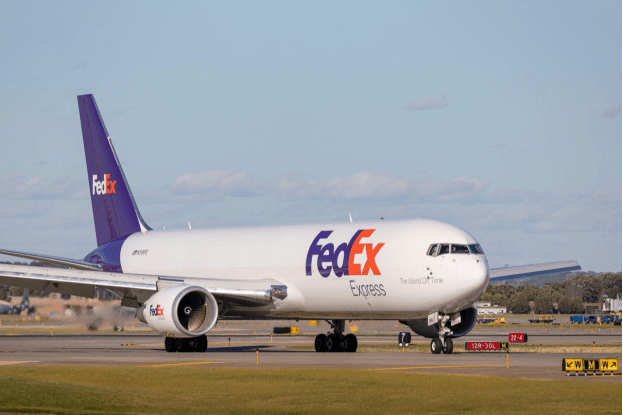
Source: Unsplash
The headquarters of FedEx Corp is in Memphis, Tennessee, led by Frederick W. Smith as the executive chairman and Raj Subramaniam as the president and CEO. The company has a market capitalization of about $56.84 billion and a net income of approximately $771 million for the fiscal year 2023.
FedEx Corp got listed on the New York Stock Exchange as FDX in 1978. The stock trades in U.S. dollars and follows the trading hours of the NYSE, which are from 9:30 a.m. to 4:00 p.m. Eastern Time on weekdays. The stock also has pre-market and after-market trading sessions that extend from 4:00 a.m. to 9:30 a.m. and from 4:00 p.m. to 8:00 p.m., respectively. FedEx Corp has never had a stock split, but it pays quarterly dividends to its shareholders. The latest dividend was $1.15 per share, paid on April 3, 2023. Some of the latest developments that investors and traders should note are:
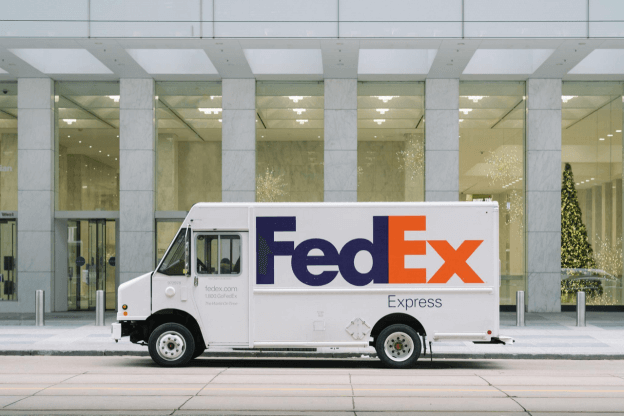
Source: Unsplash
● FedEx announced its fiscal year 2023 first-quarter results on March 16, 2023, reporting revenue of $22.2 billion, down 5.9% year-over-year, and diluted earnings per share of $3.05, down 27.4% year-over-year.
● FedEx announced on September 15, 2022, that it will increase its shipping rates for FedEx Express, FedEx Ground, FedEx Home Delivery, FedEx Freight, and FedEx SmartPost services effective January 3, 2022. The average rate increase was 5.9% for U.S. domestic, U.S. export, and U.S. import services.
● FedEx announced on August 24, 2022, that it would acquire ShopRunner, an e-commerce platform that connects online shoppers with their favorite retailers and brands. The acquisition will enhance FedEx's e-commerce capabilities and offer more benefits to its customers.
United Parcel Service Inc (NYSE: UPS)
United Parcel Service Inc (NYSE: UPS) is the world's largest package delivery company and a leading global provider of specialized transportation and logistics services. The company provides worldwide letter and package delivery, transportation, and logistics solutions, serving more than 220 countries and territories.
United Parcel Service Inc got founded in 1907 by 19-year-old James E. Casey and another teenager, Claude Ryan, as the American Messenger Company in Seattle. They started with a borrowed $100, ran errands, and made deliveries on foot or by bicycle. In 1919, the company expanded to Oakland, California, and adopted the name United Parcel Service. It also painted its vehicles dark brown, symbolizing class, sophistication, and professionalism. Over the years, UPS grew into a global giant with over 530,000 employees and over 115,000 vehicles.
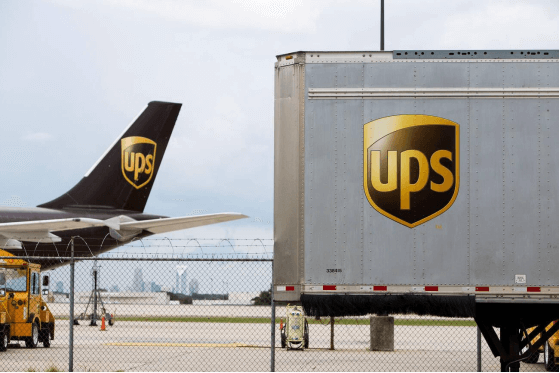
Source: Alamy
United Parcel Service Inc is headquartered in Atlanta, Georgia, and Carol Tomé is the CEO. The company has a market capitalization of about $145.80 billion and a net income of about $1.9 billion in the first quarter of 2023.
United Parcel Service Inc got enlisted on the New York Stock Exchange as UPS in 1999. The stock trades in U.S. dollars and follows the trading hours of the NYSE, which are from 9:30 a.m. to 4:00 p.m. Eastern Time on weekdays. The stock also has pre-market and after-market trading sessions that extend from 4:00 a.m. to 9:30 a.m. and from 4:00 p.m. to 8:00 p.m., respectively. United Parcel Service Inc pays quarterly dividends to its shareholders. The latest dividend was $1.62 per share, paid on March 10, 2023. Some of the latest developments that investors and traders should note are:
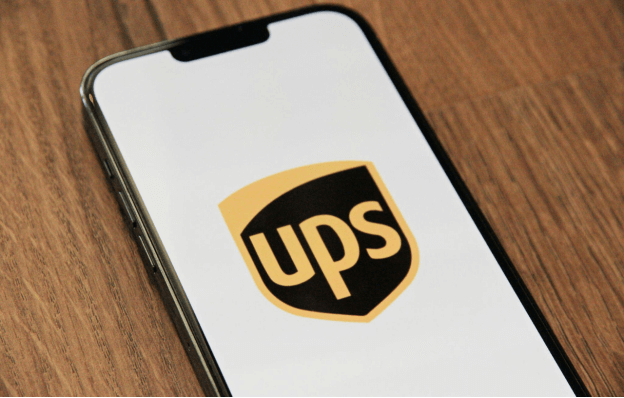
Source: Unsplash
● UPS announced its first-quarter results on April 25, 2023, reporting revenue of $22.9 billion, down 6.15% year-over-year, and diluted earnings per share of $2.19, down 27.87% year-over-year.
● On August 3, 2022, UPS announced that it would acquire Roadie, a same-day delivery platform that connects local and national businesses with drivers who can deliver goods quickly and efficiently.
● On September 9, 2022, UPS announced that it would increase its shipping rates for UPS Ground, UPS Air, and International services effective October 4, 2022. The average rate increase was 4.9% for U.S. domestic services.
Growth Catalysts for FedEx and UPS

Source: Unsplash
FedEx and UPS have key growth catalysts that could boost their long-term growth.
E-Commerce Growth Driving Increased Shipping Volumes
The pandemic boosted online shopping, creating more demand for package delivery services. FedEx and UPS have been expanding their e-commerce capabilities by offering faster delivery options, enhancing their networks and facilities, and partnering with online retailers and platforms.
Business-to-Business Shipping Also Remains Strong
FedEx and UPS have a significant presence in the business-to-business (B2B) segment, accounting for about 60% of their total revenue. B2B shipping involves transporting goods and materials between businesses. This segment has been recovering from the pandemic-induced slowdown as industrial production, trade activity, and consumer demand have increased. FedEx and UPS have been investing in their B2B capabilities, such as offering more reliable and flexible services, improving their technology and automation, and diversifying their customer base.
International Markets Present an Opportunity for Expansion
FedEx and UPS have a global reach, serving more than 220 countries and territories each. However, they still have room to grow in emerging and high-growth markets, such as Asia-Pacific, Latin America, Africa, and the Middle East. These regions offer attractive opportunities for FedEx and UPS to tap into the rising middle-class consumers, the increasing cross-border e-commerce trade, and the growing demand for logistics solutions. FedEx and UPS have been pursuing various strategies to expand their international presence, such as acquiring local companies, forming joint ventures or alliances, launching new services or routes, and enhancing their infrastructure and operations.
Innovations Like Drone Delivery Could Boost Long-Term Growth
FedEx and UPS invest in innovation and technology to improve efficiency, productivity, customer experience, and sustainability. One of the areas that they are exploring is drone delivery, which could offer faster, cheaper, safer, and greener delivery solutions. Both companies have been testing and piloting drone delivery services in various markets and scenarios.
Recent Performance and Outlook

Source: Unsplash
FedEx and UPS delivered strong financial results in 2022, benefiting from the increased demand for shipping services amid the pandemic. However, they have also faced some challenges and uncertainties in 2023, such as rising costs, labor challenges, supply chain disruptions, and competitive pressures. Here are some recent performance and outlook highlights for the two companies:
Recent Earnings, Revenue, and Stock Price Trends for FedEx and UPS
FedEx reported revenue of $22.2 billion for its fiscal first quarter that ended February 28, 2023, down 5.93% year-over-year, and diluted earnings per share of $3.05, down 27.38% year-over-year. UPS reported revenue of $22.9 billion for its first quarter ended March 31, 2023, down 6% year-over-year, and diluted earnings per share of $2.19, down 27.9% year-over-year. Both companies beat analysts' expectations on earnings, but FedEx missed on revenue while UPS beat on revenue. FedEx stock closed at $226.14 on May 30, 2023, up 27.57% year-to-date, while UPS closed at $169.76 on the same day, down 3.15% year-to-date.
Outlook and Analyst Expectations for the Companies
FedEx raised its fiscal year 2023 guidance, citing higher revenue growth and cost-cutting initiatives. The company expects revenue of $91 to $94 billion, operating margin of 7.5% to 8%, and diluted earnings per share of $18.25 to $19.50. UPS also raised its guidance for its full year 2023, expecting revenue of about $104 billion, an operating margin of about 14%, and diluted earnings per share of $14.60 to $15.20. Analysts have a consensus revenue estimate of $91.5 billion for FedEx and $101.22 billion for UPS, and a consensus earnings per share estimate of $18.38 for FedEx and $11.88 for UPS.
Which is the Better Buy? FDX stock or UPS stock
FedEx and UPS are leading players in the transportation and logistics industry, but they have different strengths and weaknesses that affect their attractiveness as investments. Here are some of the factors to consider when comparing the two companies:
Valuation
FedEx has a lower valuation than UPS based on several metrics, such as price-to-earnings (P/E), price-to-sales (P/S), and price-to-book (P/B) ratios. As of May 31, 2023, FedEx had a trailing 12-month P/E ratio of 19.67, a P/S ratio of 0.64, and a P/B ratio of 2.32, while UPS had a trailing 12-month P/E ratio of 14.22, a P/S ratio of 1.55, and a P/B ratio of 7.53. This suggests that FedEx is more efficient than UPS in generating revenue and equity from its assets but less profitable than UPS in terms of its earnings.
Dividends
UPS has a higher dividend yield than FedEx, indicating that it pays its shareholders more than its stock price. As of May 31, 2023, UPS had an annual dividend yield of 3.82%, while FedEx had an annual dividend yield of 2.23%. UPS also has more extended history of paying and increasing dividends than FedEx. UPS has paid dividends since 1969 and has raised them for 12 consecutive years, while FedEx has paid dividends since 2002 and has raised them for nine straight years.
Balance Sheet
UPS has a stronger balance sheet than FedEx, which has more cash and less debt than its rival. As of March 31, 2023, UPS had $6.2 billion in cash and equivalents and $19.9 billion in long-term debt, while FedEx had $5.4 billion in cash and equivalents and $20.1 billion in long-term debt.
Competitive Position
FedEx and UPS have different competitive positions in the transportation and logistics industry, with different market shares and segments. FedEx dominates the air freight market, as it has the largest fleet of cargo planes worldwide and operates the largest express delivery network. UPS dominates the ground delivery market, as it has the world's largest fleet of delivery vehicles and operates the largest package delivery network. Both companies face competition from other players, such as Amazon, DHL, and various startups.
Growth Potential
FedEx and UPS have similar growth potential in the transportation and logistics industry, as they benefit from some of the key trends and drivers shaping the sector's future, such as e-commerce growth, business-to-business shipping recovery, international expansion, and innovation. However, they also face challenges and uncertainties, such as rising costs, labor shortages, supply chain disruptions, and competitive pressures.
This analysis suggests that UPS is more attractive than FedEx for income investors who value dividends, while FedEx is more appealing than UPS for growth investors who value efficiency. However, both companies have similar growth prospects and face similar risks in the transportation and logistics industry.
How to Invest in FDX Stock and UPS Stock

Source: Unsplash
To invest in FedEx stock and UPS stock, you can choose one of these three ways: holding the share, buying an option, or trading a CFD. Each way has pros and cons, but CFD trading has some unique benefits, such as low costs and high flexibility. You can trade with a small deposit, profit from any price direction, and avoid commissions, fees, and premiums. You do not need to own the actual shares with CFDs.
If you wish to trade FedEx stock and UPS stock CFDs with VSTAR, here are some reasons to choose this platform. VSTAR lets you trade CFDs on various markets, such as currencies, stocks, indices, and commodities. You can enjoy low fees, fast execution, and secure trading with VSTAR. You can also use its user-friendly app, start with a small deposit, and practice with a demo account. VSTAR supports multiple payment options for your convenience.
To trade FedEx stock and UPS stock CFDs with VSTAR, follow these simple steps:
● Visit www.vstar.com or download the VSTAR app on your device.
● Register for an account by providing your details, email address, phone number, etc.
● Verify your identity by uploading your proof of identity and address.
● Deposit funds into your account by choosing your preferred payment method and amount.
● Start trading by selecting FedEx stock or UPS stock from the list of available instruments, entering your trade size, direction (buy or sell), stop loss, take profit, etc., and click on "Open Trade."
Conclusion
This article gave a comprehensive guide on investing in the freight and logistics industry by trading FDX stock and UPS stock CFDs with VSTAR. It discusses the history, business model, and stock trading information of FedEx stock and UPS stock, two of the world’s largest transportation and logistics companies. Also, we discussed the companies' growth catalysts and comparison factors and why UPS stock is more attractive than FedEx stock.
We also explored the three ways to invest in FDX stock and UPS stock and why CFD trading is your best option. Finally, we mentioned the reasons to choose VSTAR as your CFD trading platform for FDX stock and UPS stock and how to trade FDX stock and UPS stock CFDs with VSTAR easily and quickly. To learn more about CFD trading or start trading FDX stock and UPS stock CFDs with VSTAR, visit www.vstar.com or download the VSTAR app today.
